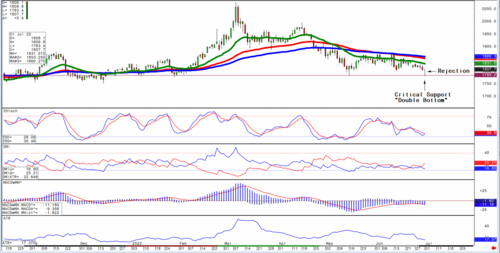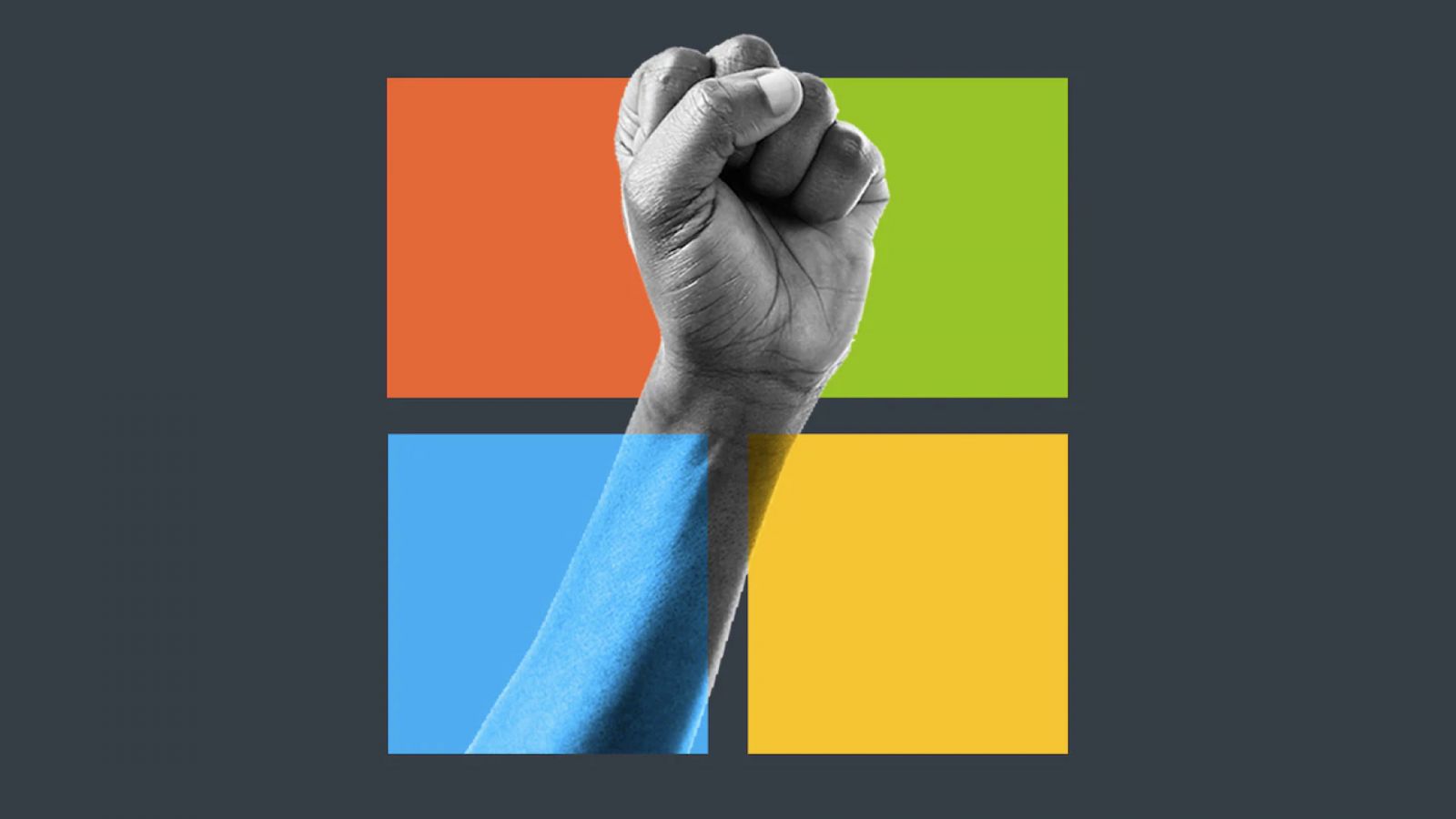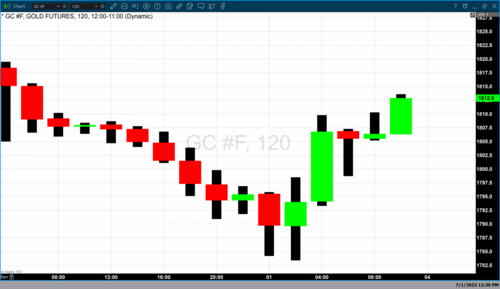The Real Spirit of America Lies in Each of Us
By Teeka Tiwari, editor, Palm Beach Daily
.jpeg)
The Real Spirit of America
Recently, I was in Pennsylvania attending my daughter’s college graduation. I popped into a local Walmart to pick up a few sweet treats for her. I could not believe what I saw. The shelves were bare. It left me shocked.
You see, I still remember the first time I walked into a U.S. supermarket. It was 1987. I felt like my head would explode. I had never seen such abundance in my life. There were rows upon rows of shelves bulging with a bounty of food I had never seen before.
I wasn’t born here. I grew up in United Kingdom’s foster care system… If you’re not familiar with the U.K. government, it’s socialist. I don’t mean “socialist” like China, Venezuela, or the former Soviet Union. Instead, the U.K. is what political scientists call a “welfare state.”
In a welfare state, the government plays an active role in the protection of the economic and social well-being of its citizens. Most developed nations, including the United States, offer some form of welfare protection to their citizens. For example, the U.S. provides Social Security to senior citizens… medical assistance to veterans… and food subsidies to poorer households.
I’m not saying the state shouldn’t help our senior citizens, veterans, or the neediest among us. But in the U.K., people believe the state should care for them from cradle to grave –no matter what. The state acts like your mom and dad. It makes all your decisions. I know from experience…
Learning Self-Reliance
One of the foster homes I grew up in housed me in a cramped, unheated room on top of a garage. It was so cold I could watch my breath coil into a frigid mist. My future looked as bleak and cold as my tiny room. But I had big dreams.
Ever since I was 12 years old, I’d wanted to work in the stock market on Wall Street in New York City. I once told my U.K. school job counselor this. His response? He told me I should focus on manual labor. “Be a telephone repairman,” he said. I knew in my heart that my future was in the financial markets.
As a teenager trapped in the foster care system, I soon realized no one would rescue me. No one would believe in me. No one would encourage me to pursue my “wild” dream. That meant I had to rescue myself. It meant I had to believe in myself and encourage myself when things didn’t go my way. At the time, I didn’t know it… but I was adopting the beliefs that have proven to be the backbone of what has made America great. Traits like self-reliance, grit, and persistence.
I watched American TV shows such as The A-Team, Miami Vice, Starsky & Hutch, Hart to Hart, The Six Million Dollar Man, Taxi, Hill Street Blues, and The Rockford Files. I loved how Americans embraced individualism. People didn’t wait on the government to give them a handout. If they had a dream, they pursued it. If the dream failed, they took responsibility and tried again. If it succeeded, they reaped the profits.
The U.S. capitalist system helped create companies like Tesla, Amazon, and Microsoft. It made men like Elon Musk, Jeff Bezos, and Bill Gates the wealthiest people in the world. To succeed in America, I knew that all you needed was ambition and work ethic. I had plenty of both. So when I turned 16, I left for America…
Coming to America
With just $150 in my pocket, I set course for the world’s financial capital – New York City. When I arrived in the Big Apple, I worked three jobs. During the day, I worked 8-hour shifts at Roy Rogers. At night, I worked 4-hour shifts at the Key Food supermarket – bagging groceries and sweeping floors. On Saturday and Sunday, I’d work 12-hour shifts at a newspaper store stocking shelves and preparing the Sunday papers.
It never bothered me to work like that. I never felt somebody owed me anything. I was overjoyed I could find so much work. To me, America was a paradise. A place that rewarded hard work.
But My Dream Was To Work On Wall Street
By the time I was 18, I had wrangled an introduction with a hiring manager at Lehman Brothers named Frank. He had no interest in hiring me until I told him I’d work for free. Let me repeat that: I told him I’d work for free. I was prepared to undergo the immense financial hardship of working for free because I knew the education I’d receive at Lehman Brothers would transform my financial life.
Frank looked at me intently when I said I’d work for free. He saw I was serious. And he changed my life by agreeing to hire me. He’d even pay me to boot. I would earn $4 per hour. And they expected me to work 10 hours per day… 50 hours per week. But they would only pay me for 29 hours per week. I later found out they chose less than 30 hours per week to avoid providing me with medical benefits. Fellow trainees were bitter about it. I wasn’t.
I was overjoyed that someone was willing to give me a shot. So there I was… working 50 hours a week, making $116 each Friday. That came out to $2.32 per hour. I picked up a job working nights on a loading dock in Brooklyn to pay rent, food, and utilities (I couldn’t afford health insurance). I worked 12-hour shifts as a cook at a local diner on Saturday and Sunday.
Between all three jobs, I was pulling in $364 per week before taxes. Out of this meager amount, I was still able to save money each month. Of course, that meant I never ate out, I didn’t own a telephone, I had no television, and I either walked or took public transportation.
One month I needed an emergency root canal. That just about cleaned me out. That month I lived on plain pasta with salt. My weight dropped precipitously. My chest sunk in, and my skin wrapped tightly around my bones. I looked like a living skeleton. At one point on the way to work, I fainted on the train from lack of food. But I never felt sorry for myself. I just stayed focused on what I wanted and kept working hard. I knew that all of my work would pay off at some point.
So at Lehman, I started as an assistant for the big-time brokers. Eventually, I became a big-time broker myself. There’s nowhere else in the world where someone like me, who grew up in foster homes with no college degree, could get an opportunity to work at one of the biggest financial firms in the world.
What I really loved about America was that the only color they cared about on Wall Street was green. Nobody cared that I am of Indian descent. Nobody cared that my skin color is brown. As long as you could make money, Wall Street accepted you. That’s all that mattered. And that was the purity of the capitalistic American spirit I loved.
Is the American Spirit Fading?
When I first arrived in the United States, I proudly told people I wanted to be a stockbroker. And they’d encourage me. “Yeah, that’s amazing. You can do it.” But something has changed today… Now, when I tell people I want to make money, they question me. “Why do you want to make so much money? What’s wrong with you? Why are you taking away resources from other people?”
I don’t recognize this America. I know I sound like a Boomer… But this isn’t the same country I arrived to back in 1987. It’s different. It’s becoming like Europe, where people actually believe the state owes them something.
Friends, the state doesn’t owe you anything. The state’s job is to protect our borders… protect our property and individual rights… and settle disputes between people in a court of law. Yet, today, people have this sense of entitlement that the state owes them something. I can’t change that. America’s on the road to becoming a European welfare state. And it breaks my heart. You can’t understand how much I love America. And I’m talking about the spirit of the American people, not the U.S. government.
Our country is amazing. You can spin up a business and a bank account in an afternoon. Try doing that anywhere else. The market size here is so massive that if you can add value, you will find a market to make your fortune. So many born and raised here fail to see just how amazing and opportunity-filled America is. That’s not a judgment. It’s an observation.
Preparing for the Future
I truly believe I was an American born in the wrong country. It’s as if someone spirited me from the hospital and dropped me off in a hospital in London. Growing up, I was so different from the people around me. I thought something was wrong with me. I didn’t realize at the time that my spirit was American. England never felt like home.
In my heart, I knew I belonged in America. That’s why I shed a tear every time I stand for our national anthem. So it pains me to see America follow the same road as Europe. It pains me to see the shelves bare at American grocery stores. It pains me to see hopelessness and resignation in the eyes of so many of today’s youth.
I’m not a politician. And I don’t care for the political polarization we see from both sides of the aisle in Congress. I can’t change that… But I can prepare for the coming changes in America. The welfare state is on its way here. It will soak the rich and middle class alike.
Our country is being dismantled by a set of beliefs that is killing the buying power of our dollars… choking the life out of innovation… and worse of all, brainwashing our children to abandon personal exceptionalism in the pursuit of collective mediocrity.
This is not the America I know. Am I just an old man with outdated beliefs? Perhaps I am. But where else but America could an uneducated immigrant from the foster care system go on to build a financial fortune? I know of no other place like our place: America.
So what am I doing to protect and grow my wealth? I’m already 1,800 words into what was supposed to be a 750-word essay. So I’ll save that for another day. For now, I will enjoy this Fourth of July. And I hope you do, too. Because even though I don’t like where our country is headed… I still believe in the American spirit. I still believe in the American people. I still believe in the free market and entrepreneurial spirit that made America the world’s greatest nation.
Let the Game Come to You!

New Opportunities Are Emerging For Citizens of The World.
Freedom and democracy may appear to be struggling to stay alive in America, but there may be a knock-out punch ready to be released. The evolution of the blockchain-enabled metaverse is going to enable the 'Citizens of the World' to gain their own Freedom by democratizing power and creating a new world with new rules, new players, and new opportunities. For 99.99% of us, the metaverse will improve our real-world lives through the democratization of power and opportunity.
Along with the major long-term trend of society towards decentralization and smaller-scale organizations, there are new opportunities developing to help 'Preparers' in the cryptocurrency sector. Businesses are beginning to issue their own Crypto Coins that can be traded on Cryptocoin Exchanges.
Markethive.com for example will be releasing its HiveCoin (HIV) in the coming weeks. It has tremendous upside potential that is outlined in a Video by Founder Tom Prendergast, "Entrepreneur Advantage…".
Not only that, if you go to their website and register as a FREE Member, you will be given 500 HiveCoins for "FREE" along with access to several Earning Opportunities and online tools to increase your HiveCoin balance.
Be sure to check it out today – Markethive.com

Tim Moseley



.jpeg)






.gif) Moya is watching the $1,785 an ounce level, citing significant support around that range. "If it gets uglier for gold over the next week of trade, it should have major support at $1,785, and that could hold as the dollar peak might be in place," he said.
Moya is watching the $1,785 an ounce level, citing significant support around that range. "If it gets uglier for gold over the next week of trade, it should have major support at $1,785, and that could hold as the dollar peak might be in place," he said.





